This site is part of various affiliate programs. Links may give us a small compensation for any purchases you make, at no additional cost to you. Please read the disclaimer policy for full details.
If you’re in a rush and don’t have time to read this article, then the best film camera for beginners is the Canon AE-1.
Film photography is an excellent creative outlet that also lets you follow in the footsteps of the great photographers, learning as you go.
But there are so many potential 35mm film cameras, from the fully manual Canon, Nikon and Minolta cameras of the 1950s, to cameras from the 2000s that mimic the design and functionality of their digital cousins, that it can be hard to know which are the best beginner film cameras.
I started with film photography using a Kodak Instamatic around 30 years ago, before eventually graduating to digital cameras, and have amassed a wealth of knowledge about starter film cameras along the way.
This article covers everything you need to know when looking for cheap film cameras for beginners, and providers you with some excellent options for your first film camera, ranging from SLRs to the best point and shoot film cameras for beginners.
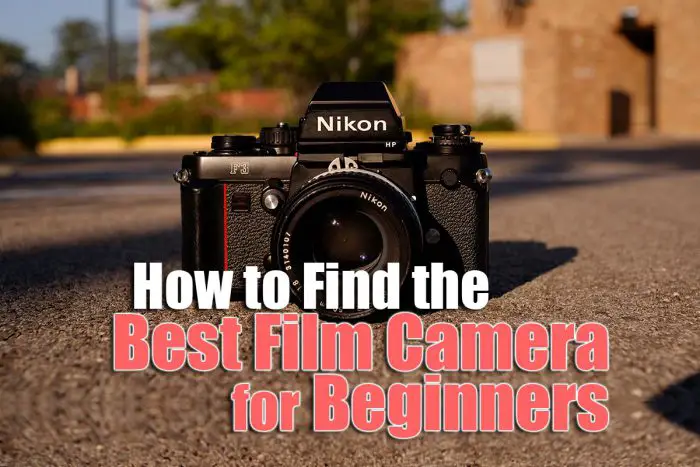
The Best Film Camera for Beginners
Classic Canon Film Camera
- Widely available at a fair price
- Canon’s first camera with a microprocessor for program mode
- Lightweight and fits in the hand well
- Classic vintage Canon design
- Uses cheaper (though still optically excellent) FD lenses
Read More:
Compare Cheap Film Cameras for Beginners
If you want affordable film cameras, then take a look at this comparison table, full of good, cheap film cameras.
Camera | Pros | Cons | Check Price | |
[Best Film Camera for Beginners] | Classic design; Program mode; Fits the hand well | Harder to find battery | ||
Classic design; Fully manual; Can work without batteries | Fully manual (!) | |||
Classic design; Aperture & shutter priority and manual modes; Good price | Some controls can be stiff | |||
Weather resistant; Very easy to use for beginners | Lower lens quality | |||
Very easy to use; Lightweight; Budget choice | Lower build quality | |||
Excellent value for money; Some auto features; Classic design | Potentially unreliable light meter | |||
Leica-like rangefinder; Lightweight and compact; Excellent lenses | Very expensive | |||
Good f/2.8 35mm lens; Vintage design | Potentially challenging focus settings | |||
Auto focus and plenty of auto settings; Light and portable | Design makes some buttons a little hard to use | |||
Brilliant rangefinder; Shutter priority mode | Aperture ring can be tough to turn |
Key Considerations for the Best 35mm Film Camera for Beginners
Because there is such a variety of good film cameras for beginners, it helps to start by first asking yourself a few questions to narrow down the models that would be right for you. This will show you whether you are looking for a point and shoot camera, a rangefinder, or an SLR film camera for beginners, and will give you a general idea of the decade of manufacture of your ideal camera.
These questions cover operation, availability and budget:
- How Much Do Film Cameras Cost?
- Do You Want Interchangeable Lenses?
- Would You Prefer Manual or Automatic Operation?
- Where to Buy Film Cameras?
How Much Do Film Cameras Cost?
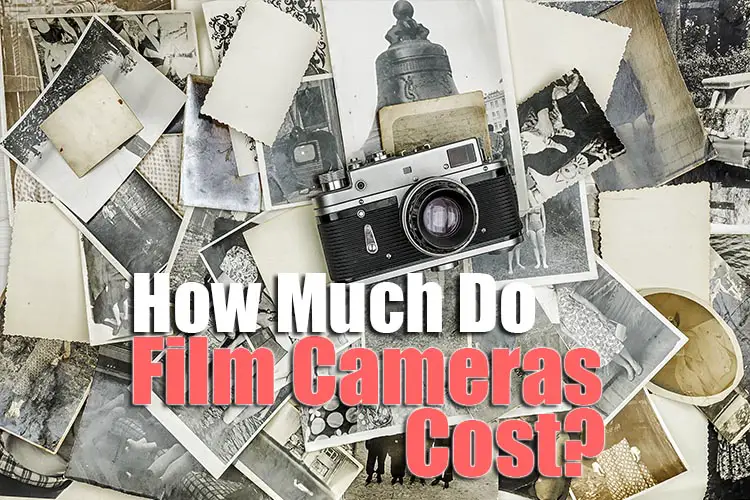
Budget is probably the most important consideration when looking for a beginner 35mm camera. You could spend thousands on a Leica, or less than $20 on an unpopular Canon from the 90s. There’s really a budget for everyone here.
The best 35mm film cameras for beginners tend to sit around the $100 mark, but it’s completely reasonable to want to spend less than this on your first camera if you are not too sure how much use you are going to get out of it.
Of course, a large part of pricing depends on condition. If you are willing to pick up something with a few dents and scratches, then you can even get a more premium camera for a lower price.
Generally speaking, point and shoot cameras from the early 2000s tend to be the cheapest models, although you are stuck with a fixed focal length and minimal manual options. Nonetheless, something like the Pentax PC-700 is a very easy to use camera and a simple film camera that is very well suited to beginners.
Do You Want Interchangeable Lenses?
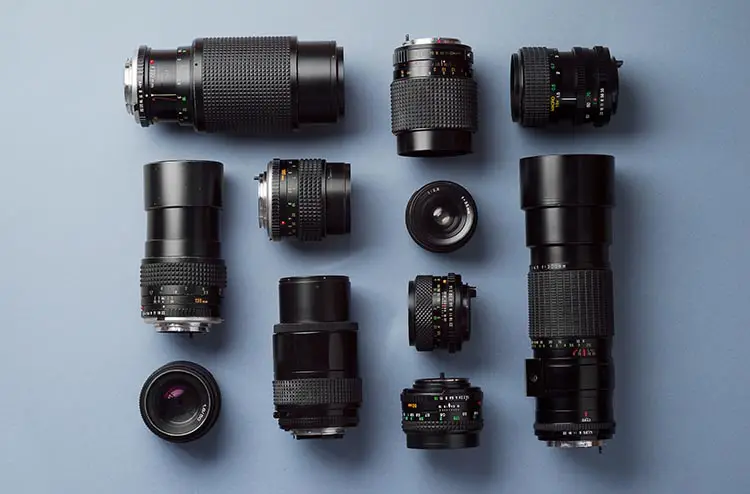
If you are serious about photography, then it makes sense to jump straight in with a film SLR. These allow for you to change your lens and gives you an almost unlimitless range of focal length options.
You do have to be careful when it comes to lens mounts though, as these have changed over the years for most manufacturers, with the one exception being Minolta, who used the same lens mount from their first lens in 1959 and still use them in the present day, albeit now under the Sony name since they bought Minolta.
The advantage of a changing lens mount is that older lenses tend to be very cheap, as very few people still use the film cameras that these lenses work on. If you compare Canon FD lenses, which stopped being manufactured in the 90s, to their current EF lenses, you’ll see that the FD lenses are markedly cheaper for the same focal lengths and optical quality.
But if you don’t want the hassle or expense of changing lenses, then a point and shoot camera or rangefinder can make a good starter film camera. As a real entry level film camera, a point and shoot is pretty much unmatched – they are cheap, easy to use and work straight out of the box.
There’s some good options for both point and shoot and SLR film cameras below.
Would You Prefer Manual or Automatic Camera?
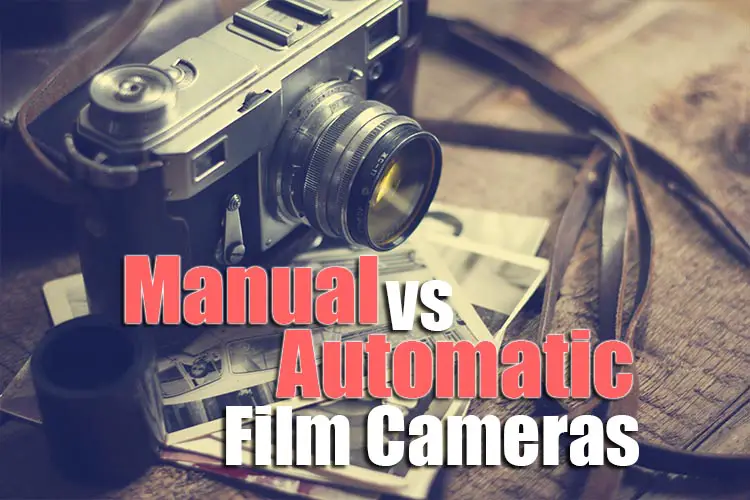
Although point and shoot cameras tend to be all nearly fully automatic, there is a much wider range when it comes to SLRs.
Unsurprisingly, older SLRs only offer manual operations and manula focus, with semi-auto functions like aperture priority, shutter priority and program mode added over the years, until SLRs produced in the late 90s to 2000s almost resemble DSLRs in their wide range of functionality and autofocus performance.
Most people starting out with film photography go for cameras produced in the high point of this era, around the mid-70s to mid-80s, with vintage cameras for beginners like the Canon AE-1 which has a classic design and mostly manual operation, plus program mode to help you nail your exposures.
If automatic functions like autofocus are a must, then cameras from the 90s onwards are really your only options, but for me, part of the fun of film photography is the manual functionality, and I know that learning this can be picked up in a very short time if you’re willing to learn.
Where to Buy Film Cameras?
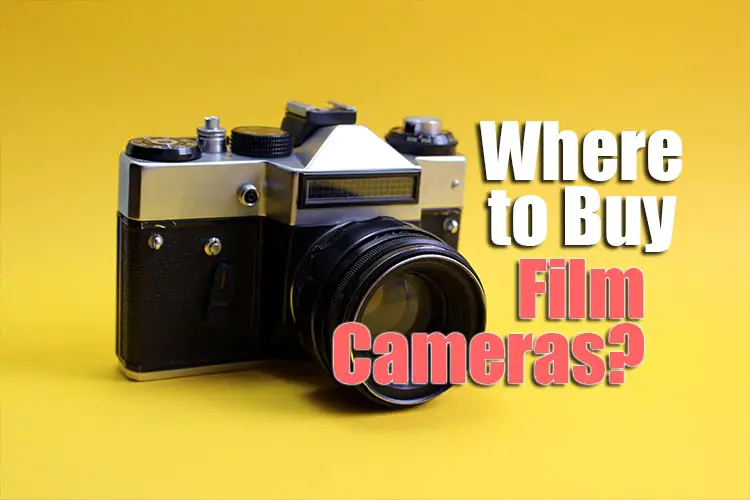
One issue with buying film cameras is that it can be tough to determine their exact condition. Even if you buy one in person, you really can’t tell how good the light seal and shutter mechanism is until you run a roll of film through it.
The cheapest options for film cameras tend to be eBay, although you should carefully check returns policy by the seller before committing, particularly if it is a big purchase.
Better, although sometimes slightly more expensive options, are established second-hand camera dealers like KEH Camera and Used Photo Pro. I find that Used Photo Pro tends to have a wider range of cameras, and you can be sure that you are getting a camera in precisely the stated condition. Unless you’re buying a very cheap camera, then these options should be preferred.
Don’t overlook the fact that you also have to develop your film, either by yourself, or by sending it off to a lab. If you will be doing a lot of film photography, then it’s worth investing in your own equipment, but it’s really not too expensive to get the odd roll developed by your local film lab.
Read More:
Best Beginner Film Cameras Reviews
This list is just a taste of some of the best beginner film cameras, including the best analog camera for beginners and the the best beginner point and shoot film camera. These choices are fairly arbitrary, and there are many more cameras in the specific articles related to each camera type below.
Read More:
1. Canon AE-1 Program
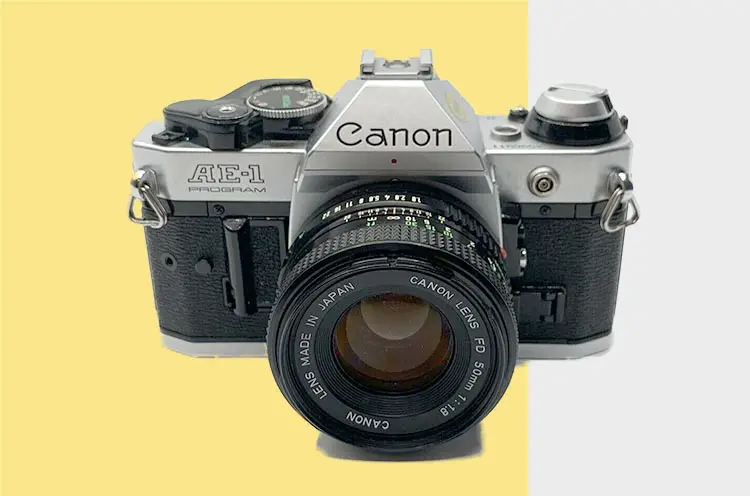
Produced from 1976 to 1984, the Canon AE-1 is still one of the most popular SLR film cameras of today. This has a classic design and all the hallmarks of a solid 35mm film camera, made with a combination of plastic and metal for a lightweight, yet sturdy camera.
It’s very easy to handle and use, with the dials fitting naturally under the fingers, and an electronically controlled focal-plance shutter, with some automatic exposure modes.
Although you can use it in full manual, there is a shutter priority and program mode, which will be familiar to digital camera users. If you want to upgrade this to include aperture priority (and gain an all-metal construction), you can look at the otherwise identical Canon A-1.
The AE-1 uses Canon’s discontinued FD lenses, which are optically as good as modern lenses, but are much cheaper since few are able to use them anymore. These do not have autofocus support.
Overall, the Canon AE-1 is a simple but well-made camera that has withstood the test of time, and remains at a very affordable price, and is my pick for the best beginner film camera.
Take a look at the Canon AE-1 Program manual for more info on the capabilities of this camera.
Pros:
- Very lightweight thanks to the plastic build
- Fits in the hand very nicely and is very easy to use
- Compatible with all Canon FD lenses
- Has electronic shutter control
- Has a microprocessor giving shutter priority and program modes
- Affordable
Cons:
- No apeture priority mode
- Needs a harder-to-find battery
- Has plastic parts, which reduces the durability, and causes squeaks during use
->> Check Latest Price
2. Nikon FM2
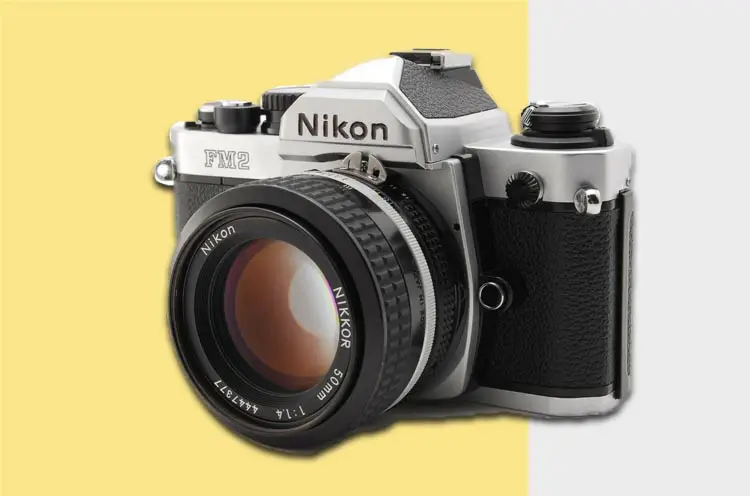
As a competitor to the Canon AE-1, the Nikon FM2 is their version of a classic camera, but with a few Nikon-only tweaks.
It has an all-metal body, giving it some extra toughness but at the expense of a little more weight, and had a surprisingly wide range of shutter speeds, from 1 sec to 1/4000 secs, which was rare at the time of release.
Unlike the Canon, the FM2 is fully manual, meaning that there are no auto modes to save you. This is therefore better suited to those with some experience of photography, or those who already own a stable of Nikon glass.
This is one of the major advantages of the FM2 – any lenses made post-1977 that have an aperture ring will work on this camera, meaning that even modern lenses can be used in most cases, though they will lose some functionality, like autofocus.
As the camera is fully manual with a mechanical shutter, you can use it without batteries, albeit without the light meter, but this does mean the Nikon FM2 is really suited for any kind of use.
Pros:
- This camera is fully manually and can operate even without a battery, making it flexible to use
- Small and lightweight
- Sturdy and robust, withstanding tough conditions while also offering durability and stability
- The exposure meter offers accurate and consistent results
- It has good weather protection measures in place making it suitable for regular outdoor use
- Classic design and very popular among enthusiasts
Cons:
- No auto mode can make it harder to use for beginners
- There is some shutter lag
->> Check Latest Price
3. Minolta XD11/XD7/XD
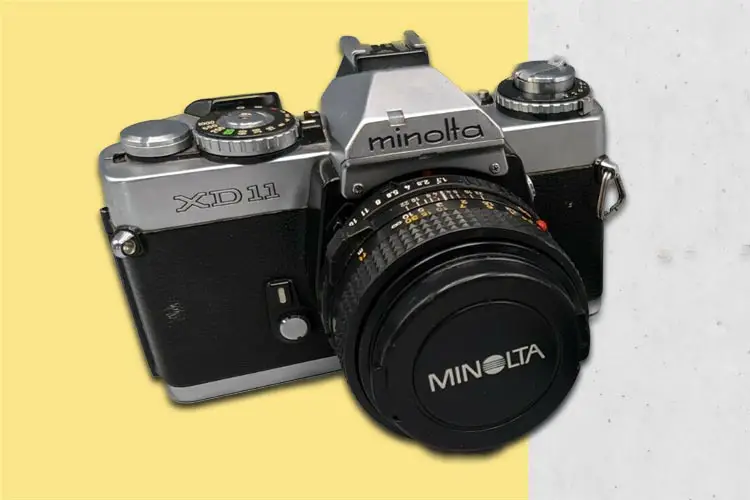
The Minolta XD11 (or XD7 or just XD depending on territory) is midway between the Nikon FM2 and Canon AE-1, but often found for a lower price and with a wider range of lenses available.
It has a fully metallic body, plus aperture and shutter priority modes and a fully manual option. The metering sytem is particularly well done in the XD11, as it runs a second check after depressing the shutter to ensure your exposures are spot-on when in one of the auto modes.
This can also be operated in manual only mode without batteries, and without the light meter.
Perhaps Minolta’s greatest advantage though, is that their lens mount has not changed substantially since 1959, meaning that you have around half a century’s worth of lenses to choose from with this camera.
Since Sony bought the remnants of Minolta to found their digitial imaging department, they also took this Minolta mount, meaning that recent Sony lenses, provided they have an aperture ring, will work on the XD11, although without autofocus.
If you’re not tied into a specific lens system already, or if you have some Sony lenses, then the Minolta XD11 is an excellent budget choice for a beginner film camera.
Pros:
- The first iteration of aperture priority and shutter priority
- You can operate this camera without a battery if you use it only with its manual settings
- It has a PC connection that can make transfer processes simpler while also letting you use it properly in studio settings
- Its body is completely made from metal, ensuring durability and sturdiness
- The shutter speed and exposure versatility can allow you to capture images of all kinds with a high-quality result
- Classic design and available for a good price
Cons:
- Certain controls can be a bit tough to use
- Maintenance can be an issue
->> Check Latest Price
4. Pentax PC-700 Review
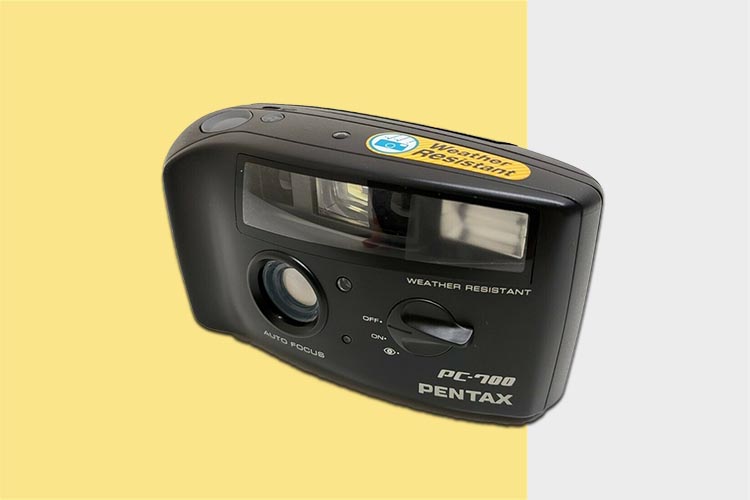
Available for only around $25, the Pentax PC-700 is a basic point and shoot film camera that is perfect for beginners wanting to get their teeth around film photography.
It’s easy to use, with minimal user settings, an autofocus and fixed 35mm lens, with the camera able to accept film ranging from ISO 100 – 400.
It’s only 215 grams, and can easily fit in a pocket, with its weather resistant casing a real advantage over similar point and shoot cameras. You don’t have to worry about light rain, the beach, or any other more challenging environment, and there’s also auto film rewinding, and red eye reduction with the in-built flash.
Image quality doesn’t match the SLRs above of course, but the low price and ease of use, plus wide availability makes the Pentax PC-700 a strong choice for those wanting to test the waters of film photography as a beginner.
Pros:
- It is weather-resistant and will thus survives rough handling better than other models. You can also take it out in the rain or snow and still get a good picture quality
- Very easy to use control setup – perfect for beginners
- Built-in flash with red eye reduction
- Light (215g), small film camera
Cons:
- The camera struggles to focus over longer distances
- Lens quality isn’t quite as high as other models, although is still very good
->> Check Latest Price
5. Canon EOS Rebel G
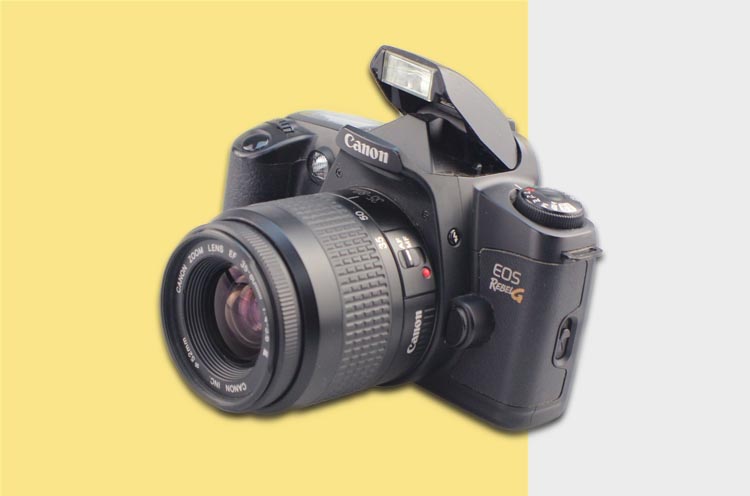
The Canon EOS Rebel G, or EOS Kiss in Japan, was released in 1996, and so has a lot of features in common with modern digital cameras. It obviously shares a lot of the same design, but also used the EF lens mount, which is still used for full frame Canon digital cameras.
This is really a budget model, with all plastic construction and a popup flash, but remains lightweight and importantly has multiple autofocus modes, plus 11 shooting modes: basic, landscape, portrait, full auto, sports and macro, plus five advanced modes. These are all features that you will be familiar with from modern cameras, so this is a good choice for beginners who don’t want to stray too far from their exsiting setup.
The Rebel G is unusual in being one of the few cameras to wind the film to the end on loading, taking photos in reverse order.
Because it’s so inexpensive, yet takes as high quality photos as pricier cameras, and comes with so many modern functions, the Canon Rebel G is probably the best cheap film camera, and a very good film camera for beginners, particularly if you already have some EF lenses.
Pros:
- Very easy to use – similar to modern DSLRs
- Compact and lightweight
- Produces good quality images
- Modern metering system
- The shutter and mirror are very quiet
- Good budget choice
Cons:
- The finder is very small and dim
- Build quality is lower – camera is all plastic
- Manual control is not very intuitive
->> Check Latest Price
6. Nikon FE2
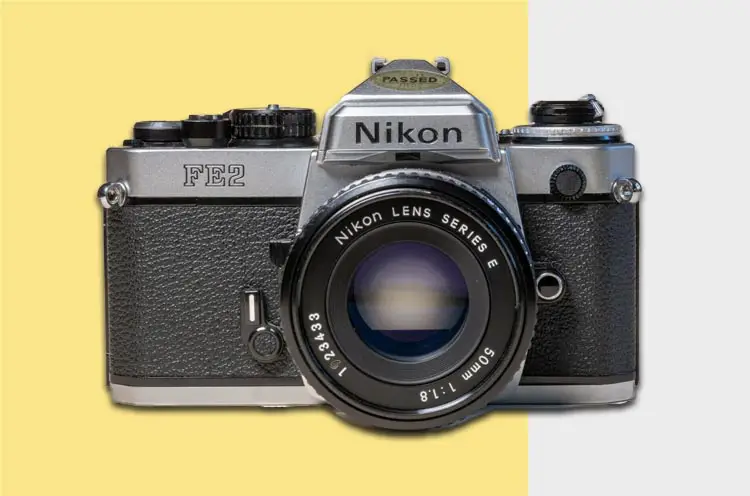
The Nikon FE2 is a solid replacement for the original FE model and includes an aperture priority shooting mode, plus an upgraded titanium shutter.
The FE2 is only compatible with Nikon lenses made after 1977, which is when they upgraded their metering system’s connection between lens and camera, slightly limiting the range of lenses that you can use, but there are still many good cheap lenses that you can use.
There’s no autofocus of course, but there are some auto exposure modes in addition to full manual control, which is where it has the advantage over the Nikon FM2. This is also significantly cheaper as it is less of a collector’s item, so is a really good choice for beginner photographers looking for their first Nikon film camera.
Pros:
- Very good value for money
- This camera comes with great battery life, allowing you to make use of the film for a good few hours without running out in the middle
- With both electronic and mechanical functioning, it can be possible for you to rely on the manual mode as backup
- This is a compact and lightweight camera, allowing you to carry it around as required
- Has an aperture priority mode for semi-auto shooting
Cons:
- Can be difficult to repair given its reliance on electronics
- Light meter can be unreliable
->> Check Latest Price
7. Minolta CLE
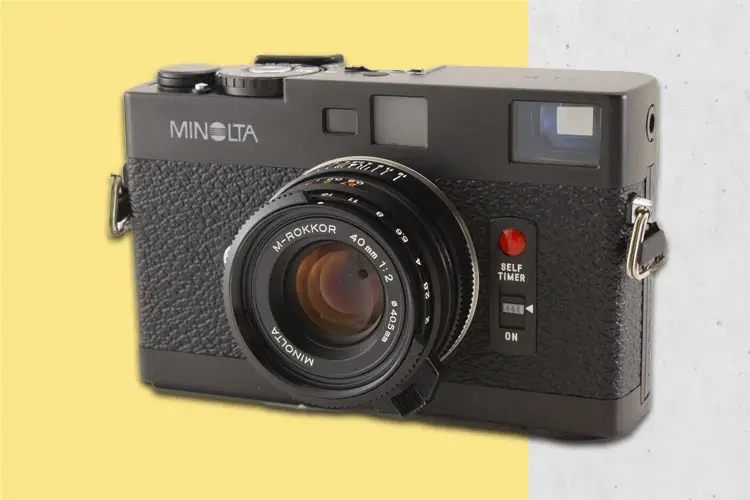
The Minolta CLE is not a cheap camera, but it is a truly excellent rangefinder that rivals Leica for image quality and usability, but unlike the Leica’s it has both manual and aperture priority modes.
There are three M mount lenses for the CLE, in 28mm, 40mm and 90mm focal lengths, with guidelines for each visible in the viewfinder, as you don’t look through the lens with rangefinders.
These M Rokkor lenses were designed specifically for the CLE, and offer outstanding, pin-sharp image quality, all in a tiny package.
Despite being launched as long ago as 1981, the Minolta CLE is still in high demand as a collector’s item, and as such is very expensive to buy. But if you want a Leica-like camera, but with some electronic functions, then you’re not going to find a better option than the CLE.
Pros:
- Reliable rangefinder camera
- You can use this camera in manual and aperture-priority modes to offer you flexibility in terms of operation
- Being lightweight and compact, the CLE is ideal for day-to-day photography
- Sturdily built and should last for decades if looked after
- Very classic deisgn and a collector’s item
Cons:
- Repair shops can be difficult to find for this model
- Very expensive
->> Check Latest Price
8. Ricoh FF-1
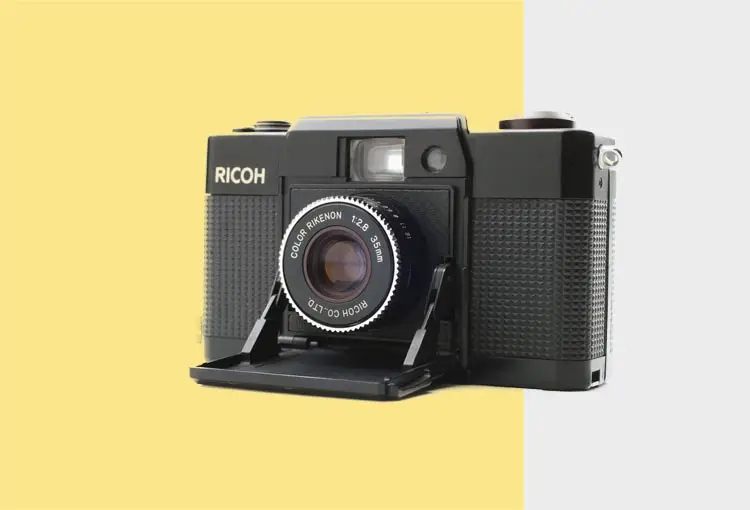
The Ricoh FF-1 dates from 1978, and has a distinctive vintage design in a rangefinder format. It has a 35mm lens opening out to an f/2.8 max aperture, and an electronic shutter rated from 2 sec – 1/500 sec.
It’s a small and light camera, coming in at 225 grams, and only needs two readily available LR44 batteries for power.
There’s auto-exposure control and manual focus on the lens, plus a flip up cover to protect the lens when in transit.
The Ricoh FF-1 is not a popular camera, hence it is widely available for under $100, but is a fun, basic point and shoot camera for beginners.
Pros:
- The lens is covered by a flap when not in use, giving it excellent protection from the elements
- It is powered by button batteries that are easier to find than the batteries of some other models
- The camera is light and highly portable
- Its wide field of view and strong f2.8 lens delivers high-quality pictures
Cons:
- Manual focusing on the camera can be challenging, especially for a beginner
->> Check Latest Price
9. Olympus XA2
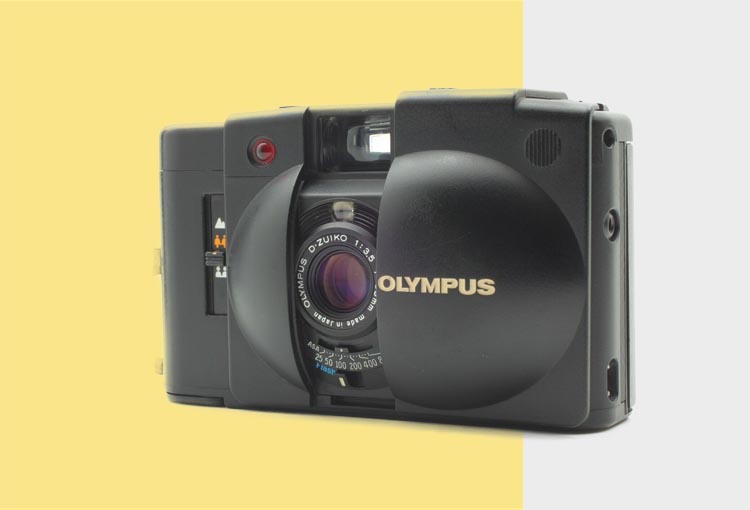
The Olympus XA2 is one of those small, compact point and shoot cameras that over-delivers on what you would expect. It follows on from the revolutionary Olympus XA, offering a three-zone scale focusing system.
It has full auto settings, choosing aperture and shutter speed for you, or you can easily set these manually. For an older point-and-shoot camera, it has surprisingly strong focus, comfortably focusing to 1.5 meters, 3 meters and infinity using the lever to select each focusing zone, and is very well setup as a beginner film camera.
There’s a lot of the benefits of a more sophisticated rangefinder in the XA2, but in a more point and shoot camera package, meaning that at the right price, the Olympus XA2 can be an excellent choice for pretty much anyone.
Pros:
- It is powered by two SR44 button batteries that are easily available
- It is light and portable
- It uses three-zone manual focusing, ranging from 1.5m to 3m and infinity, which is perfect for those more used to automatic digital cameras
- There’s plenty of manual settings that you can make, or you can leave the camera on semi-auto
Cons:
- The camera can be challenging to handle because of its design
->> Check Latest Price
10. Canon Canonet G-III QL17
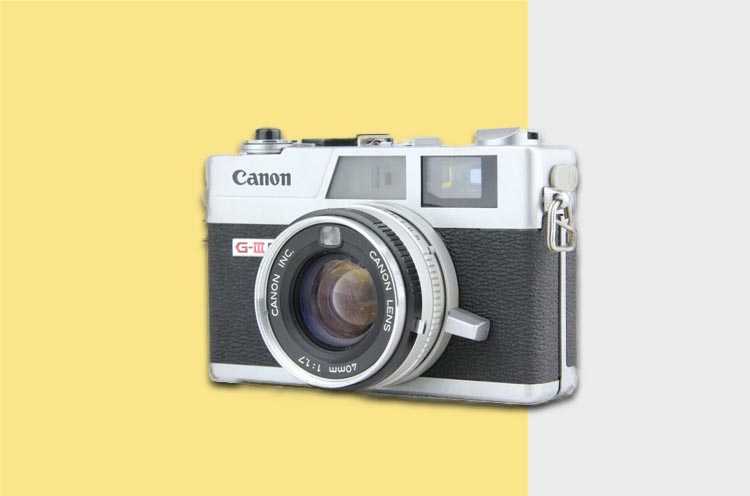
Released by Canon in 1972, the Canonet G-III QL17 is a rangefinder that comes equipped with a 40mm f/1.7 lens and a leaf-shutter design. It was a bestseller in its day, meaning that there are plenty of excellent models still available second-hand.
There’s an integrated light meter which can power a shutter priority mode, or you can shoot in full manual, and there’s a max shutter speed of 1/500 sec.
The QL in the name refers to the Quick Loading system that allows you to more quickly load film, and which is very helpful to beginners.
If you want a cheaper rangefinder that still looks good and still gives you some auto shooting modes, then the Canonet G-III is a perfect beginner film camera.
Pros:
- Has a classic and compact build
- Quiet shutter sound
- Shutter priority mode
- Supports fully manual shooting modes
- Sturdy camera
Cons:
- The aperture ring around the lens barrel can be difficult to turn
- You can select the shutter speeds in whole stops only
->> Check Latest Price
So, What’s the Best Film Camera?
There are so many film cameras on the market today, that those I’ve shown here are just a basic introduction to the best film cameras. I’m sure others would have their own opinions, with many of the cameras I have chosen not on their list.
But pretty much every film camera that you can find will be suitable for beginners in one way or another, whether its down to autofocus, simple operation, or a bright, clear viwefinder. All you need to do is to determine which factors matter most to you, then whichever is the best film camera for you should become much more clear.
For my money, the Canon AE-1 is the best film camera around, with its mix of program mode in the Canon AE-1 Program, and manual modes for what feels much more like ‘real’ photography. Combined with the cheap FD lenses, you can’t really get better than this.
Classic Canon Film Camera
- Widely available at a fair price
- Canon’s first camera with a microprocessor for program mode
- Lightweight and fits in the hand well
- Classic vintage Canon design
- Uses cheaper (though still optically excellent) FD lenses
Read More:
What’s the Best Point and Shoot Film Camera?
Guide to the Best Minolta Film Camera
Finding the Best Nikon Film Camera










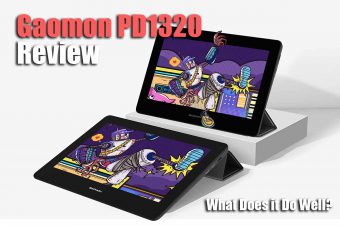
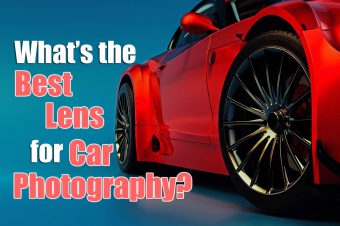

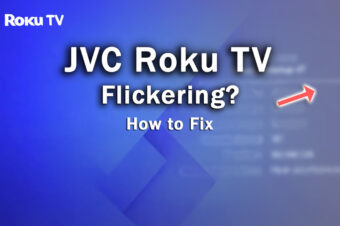
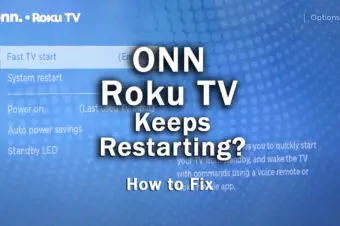
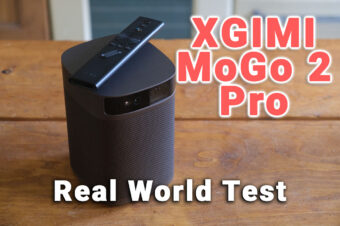
2 Responses
Alastair
Hi Tim,
The Olympus XA2 is not autofocus. It has a zone setting using the little icons next to the lens. It’s a ovely little camera though.
Tim Daniels
Thanks for the catch!